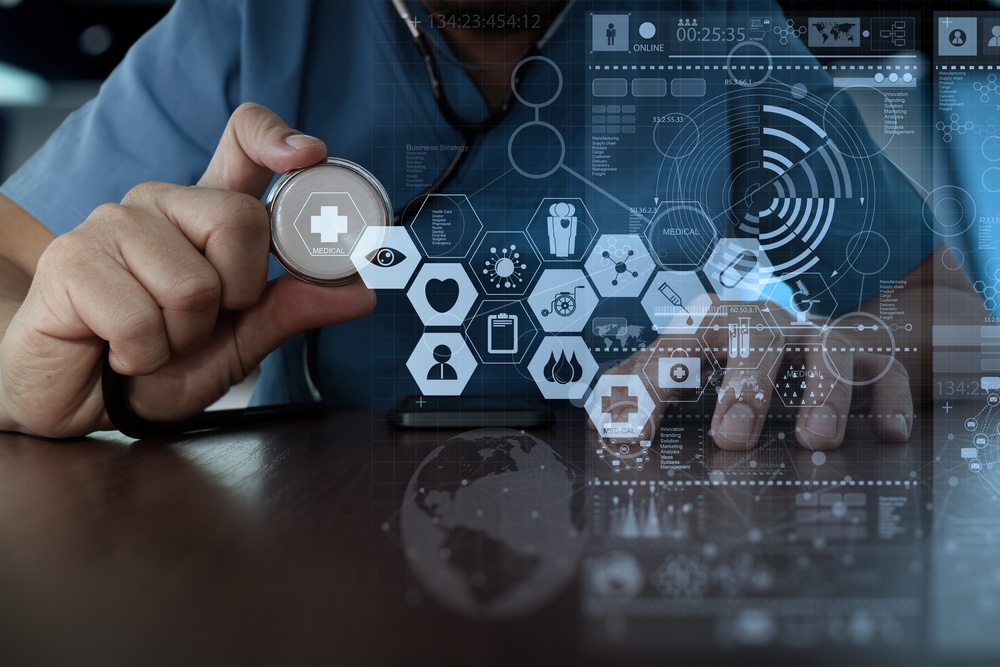



Get new exclusive access to healthcare business reports & breaking news




A recently published research article is analyzing national health data to determine whether patients are able to access and use their electronic records.
When health care providers have access to complete and accurate information, patients receive better medical care. Electronic health records (EHRs) have been proven to improve the doctor’s ability to diagnose diseases and reduce – even prevent – medical errors, thus ensuring better outcomes for the patients.
A national survey regarding doctors and the meaningful use of EHR offers important evidence:
Through EHRs, care providers have direct and reliable access to a patient’s complete health history. This helps them form a complete and comprehensive picture of the patients’ health issues and can ensure a diagnosis is found sooner. EHRs can reduce errors, improve patient safety, and ensure better patient outcomes are obtained.
EHRs are so helpful because they don’t just contain or transmit information; they “compute” it. EHRs manipulate the information in ways that make a difference for patients. Here are some examples:
A qualified EHR not only keeps a record of a patient’s medications or allergies, it also automatically checks for problems when a new medication is prescribed and alerts the clinician to potential conflicts.
Information gathered by a primary care provider and recorded in an EHR tells a clinician in the emergency department about a patient’s life-threatening allergy, and emergency staff can adjust care appropriately, even if the patient is unconscious.
EHRs can expose potential safety problems when they occur, helping providers avoid more serious consequences for patients.
EHRs can help providers quickly and systematically identify and correct operational problems. Identifying such issues in a paper-based setting is exponentially more difficult, and correcting them can take years.
The authors of the research article examined nationwide data from 2,410 hospitals for the period 2014–16. Their principal focus was on associations between patient and hospital-level characteristics and access to and use of EHR data among discharged patients.
According to the study, on average, hospitals gave 95 percent of discharged patients access to view, download, and transmit their information. Unfortunately, only about 10 percent of the patients who have access to their EHR use it after being discharged from the hospitals.
Patient usage levels remained stagnant during the study period. Access rates were highest among system-member, teaching, and for-profit hospitals.
Hospitals in the highest quartile for disproportionate share hospital status and those located in counties with high proportions of residents dually eligible for Medicare and Medicaid registered lower EHR access rates. The same was noticed for hospitals situated within counties with a high proportion of residents who were dually eligible, lacked computer or internet access, or were Hispanic.
Overall, the research findings suggest that so far policy efforts have failed to ensure patients widely use their health data or failed to bridge the “digital divide” that accompanies health care disparities.
The insights gained from big data can allow businesses to solve problems that could not be tackled with traditional software or analytics. In healthcare, these new insights can help researchers gain a deeper understanding of data in order to improve the results of clinical trials, boost the productivity of healthcare professionals and improve revenues of the practices themselves.
Sometimes, personal experience may boost the drive to push things forward.
Seema Verma, administrator for the Centers for Medicare and Medicaid Services (CMS), announced a new CMS initiative, called MyHealthEData, at the Healthcare Information and Management Systems Society (HIMSS) conference in March 2018. She told the dramatic personal story of how her husband collapsed in an airport and how, because his health care records weren’t immediately available, the first responders and the medical team at the Hospital of the University of Pennsylvania knew almost nothing about his medical history. Verma told the audience how she desperately tried to round up the needed information. It took doctors a week to discover the cause of his cardiac arrest and successfully treat him. But even when he was finally released, transferring his treatment records to his doctors back home proved difficult.
The goal of MyHealthEData, Verma announced, would be to make Medicare and Medicaid patients’ medical records far more accessible to both physicians and patients. This will help avoid uncertainty, delay, unnecessary tests and procedures, and needless dangers patients face whenever their records are not available. By giving patients more control over their own medical data, Verma told conference attendees, the new system will help patients make better health decisions. Such a system will also spur innovation and advance research to cure diseases, which would drive down costs and improve health outcomes.
Healthcare professionals think privacy issues have to be taken into consideration, and so do many healthcare executives, who are still somewhat reluctant when it comes to experimenting with AI due to privacy concerns, data integrity concerns or the unfortunate presence of various organizational silos making data sharing next to impossible.
Risks of patients finding their health information in the public eye seem real. For instance, a ProPublica report has revealed that hundreds of computer servers worldwide are so insecure that anyone with a web browser and knowledge of computer code could access patient data, including images. The nonprofit newsroom revealed that patient records including X-rays, MRIs, and CT scans were all easily accessible to anyone with basic computer knowledge. Thus, while ensuring patients have easy access to their EHR is crucial, the safety of this information is equally important.